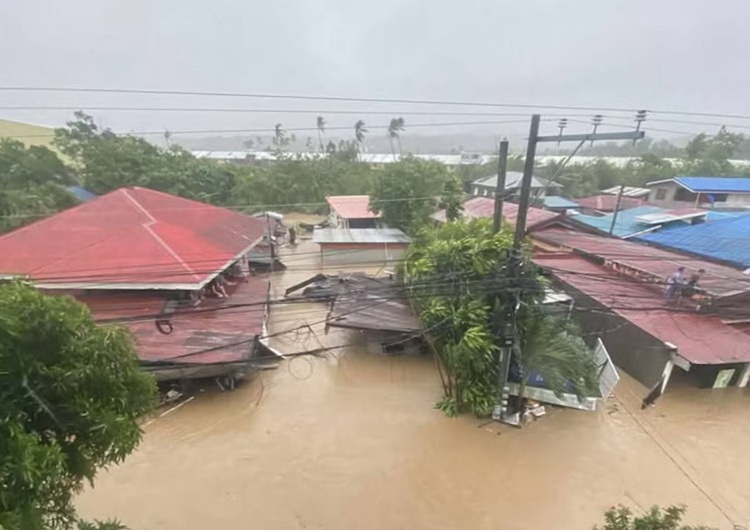Deadly Typhoon Tino Leaves Trail of Destruction Across Central Philippines
TYPHOON TINO – A deadly surge of floodwaters brought by Typhoon Tino has left at least 26 people dead and forced thousands to flee their homes across the central Philippines, particularly devastating the island of Cebu.
At least 26 people have lost their lives, and hundreds of thousands have been displaced after Typhoon Tino (international name: Kalmaegi) unleashed torrential rains and severe flooding across the central Philippines on Tuesday. Entire towns in Cebu province have been submerged, with shocking footage verified by AFP showing cars, trucks, and even large shipping containers being swept away by muddy, fast-moving floodwaters. The destruction has been described by officials as one of the worst in recent memory.
In Cebu alone, 21 fatalities were confirmed, according to civil defense deputy administrator Rafaelito Alejandro. He reported the storm’s total death toll had climbed to 26. “Based on the information that we have, most of them died from drowning,” Alejandro told AFP over the phone.

The Philippine Atmospheric, Geophysical and Astronomical Services Administration (PAGASA) reported that the area surrounding Cebu City received 183 millimeters (seven inches) of rainfall in just 24 hours before Tino’s landfall — far exceeding the province’s average monthly rainfall of 131 millimeters. State weather specialist Charmagne Varilla called the amount “extreme” and “unprecedented” for the area.
Cebu Governor Pamela Baricuatro echoed the same sentiment in a Facebook post on Tuesday, saying, “The situation in Cebu is really unprecedented.” She added, “We were expecting the winds to be the dangerous part, but… the water is what’s truly putting our people at risk. The floodwaters are just devastating.”
Local disaster response teams have struggled to reach communities trapped by rising water levels. Cebu disaster official Ethel Minoza reported that rescuers had recovered the bodies of two children in Cebu City. In nearby provinces, casualties included an elderly person who drowned inside their home in Leyte and a man who died after being struck by a falling tree in Bohol.
Residents recounted harrowing experiences as the waters rose. Don del Rosario, a 28-year-old Cebu City resident, described how the floods escalated overnight. “The water rose so fast,” he said. “By 4:00 am, it was already uncontrollable — people couldn’t get out (of their houses). I’ve been here for 28 years, and this is by far the worst we’ve experienced.”
Scientists have long warned that typhoons are becoming stronger and wetter due to human-driven climate change. Warmer ocean temperatures allow storms to intensify more rapidly, while a hotter atmosphere retains more moisture, leading to heavier rainfall.
Cebu’s information officer, Rhon Ramos, confirmed that hundreds of people still living in temporary shelters after the 6.9-magnitude earthquake in late September had to be “forcibly evacuated for their own safety.”
In total, nearly 400,000 individuals were preemptively relocated from high-risk zones, Alejandro said during a news briefing.

However, tragedy struck again on Tuesday afternoon when a military Super Huey helicopter crashed while en route to Butuan City in northern Mindanao to assist in relief operations. The Eastern Mindanao Command confirmed the incident, saying search and recovery operations were underway but declined to confirm whether there were survivors.
As of Tuesday evening, Typhoon Tino continued to move westward through the Visayas with sustained winds of 130 kilometers per hour and gusts reaching 180 kph, uprooting trees and downing power lines.
The Philippines, one of the most disaster-prone nations in the world, experiences around 20 storms and typhoons annually. With Tino, the country has already reached that yearly average — and according to Varilla, at least “three to five more” storms are still expected before the end of December.
Just two months earlier, the country endured two major storms, including Super Typhoon Nando (international name: Ragasa), which killed 14 people in Taiwan and caused widespread damage across the region.
READ ALSO: Typhoon Tino Update: Signal No. 4 Raised in 8 Areas in Visayas as Storm Heads to Cebu
